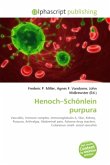The history of aspirin (also known as acetylsalicylic acid or ASA)) and the medical use of it and related substances stretches back to antiquity, though pure ASA has only been manufactured and marketed since 1899. Medicines made from willow and other salicylate-rich plants date back at least to 3000 BC, and were part of the pharmacopoeia of Western medicine in Classical antiquity and the Middle Ages. Willow bark extract became recognized for its specific effects on fever, pain and inflammation in the mid-eighteenth century. By the nineteenth century pharmacists were experimenting with and prescribing a variety of chemicals related to salicylic acid, the active component of willow extract.In 1853, chemist Charles Frédéric Gerhardt reacted acetyl chloride with sodium salicylate to produce acetylsalicylic acid for the first time; in the second half of the nineteenth century, other academic chemists established the compound's chemical structure and devised more efficient methods of synthesis. In 1897, scientists at the drug and dye firm Bayer began investigating acetylsalicylic acid as a less-irritating replacement for standard common salicylate medicines.
Bitte wählen Sie Ihr Anliegen aus.
Rechnungen
Retourenschein anfordern
Bestellstatus
Storno








